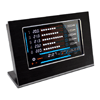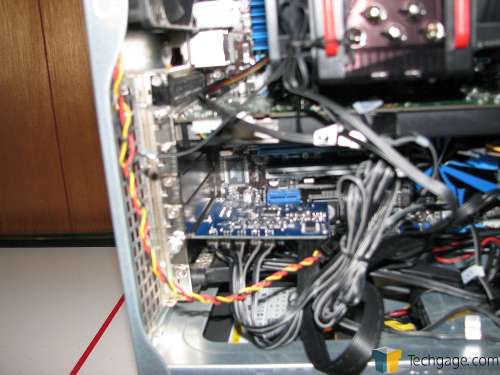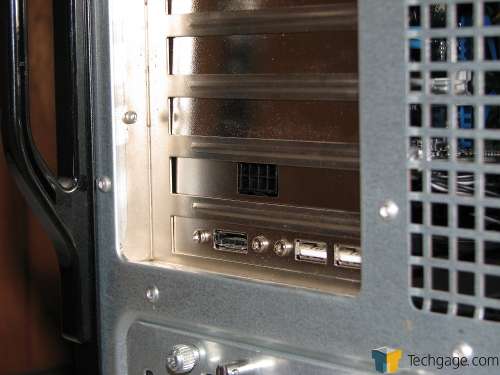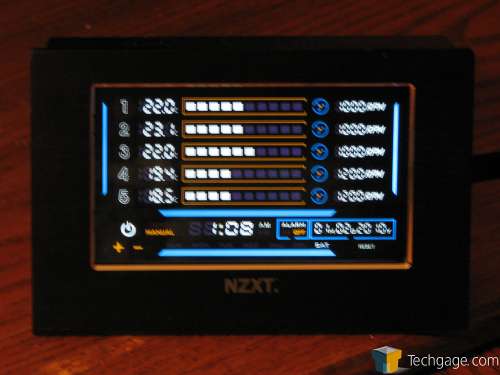- Qualcomm Launches Snapdragon 4 Gen 2 Mobile Platform
- AMD Launches Ryzen PRO 7000 Series Mobile & Desktop Platform
- Intel Launches Sleek Single-Slot Arc Pro A60 Workstation Graphics Card
- NVIDIA Announces Latest Ada Lovelace Additions: GeForce RTX 4060 Ti & RTX 4060
- Maxon Redshift With AMD Radeon GPU Rendering Support Now Available
NZXT Sentry LXE Touch-Screen Fan Controller

Although NZXT produces a wide-range of products, its fan controllers have become one of the highlights of its line-ups. The reasons are threefold: features, performance and price. We were left quite impressed with earlier Sentry models, and we can say that NZXT has done it once again with its Sentry LXE.
Page 2 – Installation & Testing
As hoped, installation was a very simple affair. The first step is to mount the control board in an empty PCI expansion slot. Once that is done, you need to connect each fan to the channel you desire and follow that up by placing the thermal probe in the area of the fans. I chose to run mine with corresponding channels for both. It is up to the end-user to truly decide just how to route everything.
Once you are done doing that, you just plug the 8-pin connector from the LCD screen and power up the system. The cable has a positive lock, so there is little chance it can fall out without you actually wanting to remove it.
Once powered up you can get the setup finished by changing the clock to the correct time and then experiment with the controls to find the settings that suit your needs. I prefer to run the fans manually and tune them down as much as possible. My test bed went from a full roar to being nearly silent in no time flat.
I want to make it very clear that I do not have any issues with noise from the control board. Previous models of the Sentry line were reported by some consumers to have a whine or squeal from the voltage regulators. While my personal samples never exhibited this problem, it is a documented issue that looks to have been corrected with this release.
Since this product is not designed to improve cooling power I did not concentrate my testing results on temperature levels. Instead, I focused on noise levels. By using my trusty decibel meter, I was able to get very accurate results of just how well the LXE can quiet down a loud system. Here are the results:

The results speak for themselves. Having the ability to change fan speeds on the fly really shows you just how versatile a fan controller is. I was more than pleased to see that I could reliably lower my sound readings by nearly 10dBA. While the number seems small on paper, it is the difference between someone talking to you and someone shouting in your ear. Also, remember that there is no buzzing or whining from any of the fans, so there is no tradeoff in one type of noise for another.
Support our efforts! With ad revenue at an all-time low for written websites, we're relying more than ever on reader support to help us continue putting so much effort into this type of content. You can support us by becoming a Patron, or by using our Amazon shopping affiliate links listed through our articles. Thanks for your support!







